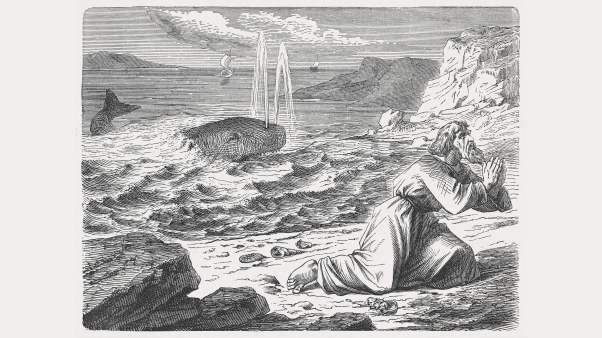Axel Gustafsson Oxenstierna
Comenius placed great confidence in this Swedish leader, confidence that would be disappointed. As chancellor of Sweden (1612–1644), Oxenstierna wielded considerable power. King Gustavus Adolphus II was more of a warrior than an administrator, and generally left domestic affairs in Oxenstierna’s able hands. The chancellor was a good organizer and a skilled diplomat. The peace he arranged with Poland in 1629 allowed Gustavus to enter the Thirty Years War in 1630. After Gustavus’s death (1632), Oxenstierna was the dominant member of the committee that ruled Sweden until Queen Christina came of age in 1644. In that capacity he accomplished a number of social and economic reforms— among them the invitation to Comenius to develop Swedish schools. But Oxenstierna did not get along with the young queen and his power declined after Christina’s accession. He was not directly involved in the negotiations of the Peace of Westphalia (1648), which may explain why his promise to Comenius, to look after the interests of the Brethren, was never fulfilled.
Gustavus Adolphus, King of Sweden (1594–1632)
The “Lion of the North,” Gustavus Adolphus was acknowledged as one of the great military men of his day. When King Gustavus intervened in the Thirty Years War, he embodied the hope of Comenius and his fellow exiles for the re-establishment of their lands and a defeat of the Hapsburg Catholics. In A Trumpet for the Year of Grace, Comenius reflected this mood; Gustavus was shown to be a great conqueror in this pamphlet. Ironically, Gustavus’s primary purpose was to strengthen Sweden, not to enter a religious conflict. However sympathetic he may have been to the Moravians. he intended to settle the exiles near the Baltic, not in their former homeland. But Gustavus never got the chance to implement his plan. He died in 1632 of battle wounds. The Peace of Westphalia materialized in 1648 while Queen Christina, daughter of Gustavus, reigned, and the Westphalian agreement brought to an end the “Bohemian question.” If any exiles were to return to Czechoslovakia it would be as Catholics, or not at all. Few Europeans decried these peace conditions after an utterly meaningless and lengthy war. True to his pietistic inclination, Comenius wrote in a 1649 letter, “…it is the beginning of wisdom to look within ourselves and search our own omissions and want of humanity….we must admit that we [Bohemian exiles] have not taken enough thought for ourselves, but always besought others to carry the fight on our behalf.” So, even though Swedish negotiators for the Peace of Westphalia may have entertained special treatment for the Bohemians, the German Protestants desired an end to the war, without regard to the memory of Gustavus Adolphus.
Nicholas Drabik (1588–1671)
A life-long acquaintance of Comenius from the town of Straznice, Nicholas Drabik was a mystic who had prophetic visions after his suspension from the ministry by the Brethren. While Comenius awaited peace negotiations at Osnabruck, Drabik’s prophecies included the overthrow of the Hapsburg power and the return of the Brethren to their land. Comenius so accepted the truth of these visions that his faith went unshaken by their failure to materialize, even as the visions became more elaborate, transformed and eventually retracted.
Comenius collected Drabik’s prophecies, as well as those of other mystics, into a book, Lux in Tenebas, which was never published but circulated among his friends. Until Comenius’s death, he corresponded with this unusual man. His trust in Drabik has generally been considered a tragic mistake by Comenius historians.
Drabik converted to Catholicism after Comenius’s death and disavowed his own prophecies. His conversion did not save him; Emperor Leopold I had Drabik’s tongue cut out, then had him executed.
Francis Bacon (1561–1626)
Comenius produced a science of education with a distinctive Christian theology through the influence of Francis Bacon’s inductive method. Both men were Aristotelian realists, contradicting the classic idealism of Plato. Apparently, Comenius was quite familiar with Bacon’s philosophical work, embodied in such writings as The Advancement of Learning (1605), a systematic classification of all branches of knowledge. Whereas Comenius’s interest was in both knowledge of the natural world and knowledge of the supernatural, Bacon’s was exclusively in the natural.
George Ritschel (1616–1683)
Like Comenius, George Ritschel was a Bohemian. He is considered one of the Oxford philosophers of the 17th century along with such thinkers as Hobbes and Locke.
His association with Comenius was as the latter’s literary assistant (1644–1647) on The Great Didactic and his pansophic work. However, in the course of the years, Ritschel’s elaborate treatment of the philosophy on metaphysics transformed so profoundly from Comenius’s simpler and more compressed ideas that his contribution was not considered suitable for popular use. Both men were annoyed with each other over the delay in publishing the great work. Nonetheless, Comenius supported Ritschel during their long association financially and emotionally, even when it was a burden to do so.
Ferdinand II (1578–1637)
Son of a Styrian duke and a Bavarian princess, Ferdinand was chosen to succeed his childless uncle Matthias as Holy Roman Emperor. Trained by the Jesuits, the young duke was a diehard Catholic. He planned to use the imperial throne to reunite Germany as a Catholic nation, to undo the Protestant Reformation. In preparation, Matthias made him king of Bohemia in 1617—a move amazingly ratified by the Protestant nobles of Bohemia. They soon regretted it. Ferdinand’s sharp curtailing of Protestant freedom incited a rebellion in Bohemia which eventually became the Thirty Years War. For Ferdinand it was a holy war. After his uncle’s death in 1619, he flung all the resources of the Holy Roman Empire into the conflict, even when Denmark, Sweden, and eventually France joined the opposition. (He did enlist the aid of his cousin Philip, who ruled Spain.) The war went well for Ferdinand early, but it seemed that whenever he was in a position to negotiate peace with substantial gains for his own side, he would do something that would add fuel to the fire of his enemies. The Bohemian revolt might have been bottled up after Ferdinand won the Battle of White Mountain in 1620, but the way he clamped down on the Protestant rebels alarmed other Protestants in Europe. His Edict of Restitution, demanding return of lands to the Roman Church, showed more zeal than tact, and stirred up more opposition. He turned back the Danish army, but also invaded Denmark, which may have convinced Sweden to go to war. Things looked good for Ferdinand when he stopped the Swedish army in 1634, but then France entered the fray and turned the tide. Ferdinand II died in 1637, leaving the embattled empire to his son, Ferdinand III (1608–1657). The new emperor was less of a zealot, and apparently not much of a warlord. The Catholic forces saw their fortunes slip away over the next eleven years, culminating in the 1648 Peace of Westphalia, in which Ferdinand III was forced to make many concession s.
Charles of Zerotin (1564–1636)
Count Charles was a powerful friend of the Unity of the Brethren. He first came in contact with Comenius when Comenius was a student at the Unity’s Latin school at Prerov. Charles was lord of the city and had a special interest in the school. Having been educated abroad—as a pupil of Beza in Geneva—he was always seeking to upgrade the quality of the Unity’s educational system. With the support of Count Charles, Comenius went on to study at the Reformed Gymnasium at Herborn in Nassau. Thus Charles’s own respect for foreign schools, his love of education, and his reformed leanings all had an impact on young Comenius. Throughout his life, Zerotin established friendly relations with leading personalities in Europe. He fought in the armies of Henry IV of France, was a friend of Philip du Plessis-Mornay, and corresponded with Queen Elizabeth and King James I. The count was also an accomplished writer. In 1608 Charles became the supreme vice-regent of Moravia. But seeing the rise of anti-Protestant sentiment in succeeding years, he withdrew more and more from public life. He stayed out of the Bohemian uprising in 1618, and thus was allowed to keep his estates after the Catholic victory at White Mountain. On his estates, he sheltered a number of Unity leaders, including Comenius, until an imperial mandate made him expel them. It was during his years at the Zerotin estate that Comenius wrote his first major work, The Labyrinth of the World. He dedicated the book to Count Charles.
Ludovicus de Geer of the Netherlands (1587–1652)
Louis de Geer was a wealthy industrialist in steel and war supplies. He received his largest order ever in 1631 from King Gustavus Adolphus to arm the Swedes during the Thirty Years War. It was after this that de Geer became Comenius’s patron. Through the de Geer family’s financial support and sometimes overused hospitality, Comenius was supported and introduced to important ties not only in the Netherlands but in other parts of Europe as well. In the 1640’s, when Comenius failed to complete his huge didactical works within a particular time frame for use by Swedish schools, Louis de Geer temporarily cut off financial support. Comenius depended on the de Geers to allow him the freedom to write, minister, teach and continue his relentless quest for a home for the scattered Brethren exiles. Two other benefactors failed to come through with money at this crucial time as well, and in his own defense concerning the length of time needed to produce the pansophical works, Comenius said, “I don’t just turn books by the dozen, I write them. I do not bring forth premature miscarriages.”
John Milton (1608–1674)
The author of Paradise Lost (1667), John Milton and Comenius were linked by a mutual friend and patron, Samuel Hartlib. Milton and Comenius were both educational reformers of their day, though in many important areas, such as the education of girls and women and universal education, Milton tended not to agree with Comenius. Also Milton contemptuously dismissed Comenius’s very successful Latin grammar book, Janua Linguarum Reserata. Though Hartlib was more a disciple of Comenius’s educational ideas, he nonetheless urged Milton to write down his educational practices. Milton’s pamphlet, Of Education was addressed to Hartlib in 1644, and it inspired some parents to enroll their children with Milton. However, Edward Phillips, nephew and former student of Milton’s, had this to say about his uncle’s educational ideas: “Now persons so far manuducted into the highest paths of literature both divine and human, had they received his documents with the same acuteness of wit and apprehension, the same industry, alacrity, and thirst after knowledge as the instructor was indued with, what prodigies of wit and learning might they have proved!” What recommended Milton’s plan, like Comenius’s, was a defined curriculum that progressed towards a clear goal in stages and with compassion and discipline. Both Milton and Comenius had a curious characteristic in common—the need for privacy and peaceful quietness. Unlike Comenius, Milton was to gain “a private and quiet life.”
Samuel Hartlib (1596[?]–1662)
Prussian-born and Cambridge-educated, Samuel Hartlib was, like Comenius, an enthusiastic school reformer. Hartlib promoted inventions, dabbled in the sciences, published his own and other’s manuscripts, tirelessly wrote letters, and associated with Jan Comenius, John Milton, John Dury, Robert Boyle and many other great men of his age, a fact of which he was quite proud.
Hartlib was an early disciple of Comenius in educational reform. When Comenius visited England (1642) at Hartlib’s urging, he stayed for the duration with Hartlib. Throughout the years, Comenius depended on Hartlib’s correspondence and travels for raising funds, although Hartlib himself was not necessarily attentive to his own profit and trusted that God would see to the necessary blessings for reforming schools or whatever. He felt that education ought to promote “exercises of industry” and “advance piety, learning, morality.”
Comenius considered Hartlib his special friend, honored and esteemed. Milton also considered Hartlib a friend and praised him highly.
Hartlib was one of the Secretaries of the French and Latin tongues under Oliver Cromwell. It was Hartlib who brought Comenius together with such notables as John Dury and John Pell, a mathematician.
John Dury (1596–1680)
The Scotsman John Dury, like Samuel Hartlib, worked for the Council of State with the Secretary for the Foreign Tongues under Cromwell’s government in England. John Dury was given the task of translating into French John Milton’s Eikonoklastes. At this same time, Dury was librarian at St. James and traveled widely throughout Europe.
Comenius met with Dury on his trip to England in 1642 and they remained in correspondence and friendship during their long lives. Dury, as is true with so many of Comenius’s acquaintances, was interested in educational reform and scientific thought. Dury was also an ecumenical who valiantly worked for Protestant union in Germany.
Count Nicolaus Ludwig Von Zinzendorf (1700–1762)
A pietistic Lutheran all his life, Nicolaus von Zinzendorf was a kindred pietistic spirit to Comenius and these two non-contemporaries were bonded by an ecumenical spirit that worked for the unity of all Christian believers regardless of denominational preferences.
Zinzendorf began his Moravian identity by his act of kindness that allowed Moravian refugees to find sanctuary on his land in 1722. By 1737 he was consecrated as a bishop by Comenius’s grandson, Daniel Ernst Jablonsky, in the Renewed Church of the Brethren, Comenius’s remnant seed of the Unitas Fratrum.
One thread linking Zinzendorf and Comenius was a hymnal. Both were major figures in Moravian hymnology. In 1661, Comenius prepared a hymnal which contained three sections divided by historical content. In Comenius’s day the songs went unaccompanied. By Zinzendorf’s day, when Comenius’s hymnal went through its third printing, congregational singing was accompanied by organ; other changes had also occurred. Zinzendorf said of the new songs he provided for the church, “I invent a new song of which I know nothing before and which will be forgotten as soon as it has served its purpose.” He is credited with writing over 2000 hymns.
Copyright © 1987 by the author or Christianity Today/Christian History magazine. Click here for reprint information on Christian History.










